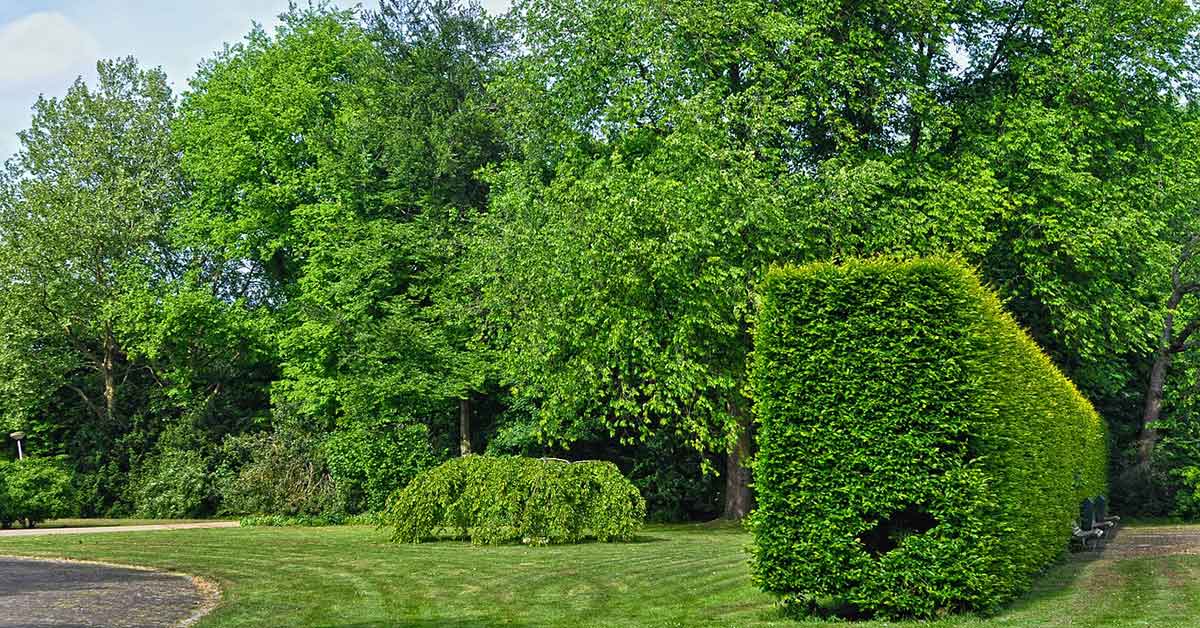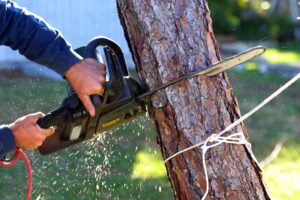Ohio Tree Removal Laws: A Comprehensive Guide (2024 Update)
Ohio is home to a diverse range of trees, and the state’s landscape benefits greatly from its rich canopy. However, removing a tree, whether for safety reasons, property maintenance, or construction purposes, requires adherence to specific laws and local regulations. Understanding Ohio’s tree removal laws is essential for homeowners, property managers, and developers to ensure compliance and avoid penalties. This guide explores the legal framework governing tree removal in Ohio, including statewide rules, city-specific ordinances, requirements for residential and commercial properties, and protected tree species.
Overview of Ohio Tree Removal Laws
Ohio’s approach to tree removal is primarily governed by local ordinances, as there is no single statewide law that regulates tree removal on private property. Each city or county has its own regulations, often focusing on:
- Permitting and protection for specific tree species
- Requirements for removing trees on residential and commercial properties
- Replacement, replanting, or mitigation requirements after tree removal
It is crucial to check with your local city or county before proceeding with any tree removal to ensure compliance with local laws.
Key Aspects of Ohio’s Tree Removal Laws
- Local Regulations: Local governments hold most of the regulatory authority over tree removal in Ohio. Regulations vary greatly, so it’s important to understand the specific rules of your municipality.
- Permitting for Hazardous Trees: Many local ordinances make provisions for the removal of hazardous or diseased trees without a permit. However, healthy trees often require a permit before removal.
- Commercial vs. Residential Requirements: Commercial properties are usually subject to stricter regulations and requirements for tree removal, while residential properties have more leeway under certain circumstances.
Statewide Tree Removal Regulations in Ohio
Ohio does not have a comprehensive statewide tree removal law; however, there are some overarching principles and guidelines property owners should be aware of:
Ohio Property and Nuisance Laws
Under Ohio’s property law, a property owner generally has the right to remove or trim any tree located within their property boundaries. However, this right is subject to local regulations, especially when it comes to healthy, mature, or otherwise protected trees.
Nuisance Trees: If a tree poses a risk of falling or is diseased to the point of endangering nearby properties or public safety, Ohio law considers it a nuisance, and the property owner is generally responsible for its removal.
Disputes Between Neighbors: Ohio law allows neighbors to trim branches of trees that extend over their property line, as long as it does not harm the overall health of the tree.
Right-of-Way and Utility Line Clearance
Ohio law allows utility companies to trim or remove trees that interfere with power lines to ensure safe and continuous service. However, utility companies are often required to notify property owners before undertaking such work, except in emergencies.
City-Specific Tree Removal Ordinances in Ohio
While Ohio does not have an overarching statewide tree removal law, cities and counties have their own ordinances and regulations. These rules often differ in terms of tree size, type, and removal process.
Example of Local Tree Ordinances
| City/County | Residential Permit Requirements | Commercial Permit Requirements | Protected Species & Replacement Rules |
|---|---|---|---|
| Columbus | Permit required for certain protected trees | Strict permitting for commercial development | Heritage trees and trees over 24 inches DBH protected |
| Cincinnati | Permit not required for residential removal | Permits for all removals impacting urban canopy | Replacement required for significant tree species |
| Cleveland | Permit required for trees in public right-of-way | Commercial properties must follow tree removal standards | Replanting or mitigation fees often required |
| Dayton | No permit for hazardous tree removal | Permit and mitigation plan for commercial projects | Protected species list applies to public spaces |
| Toledo | Permit required for protected or large trees | Detailed tree removal plan for construction | Emphasis on tree replacement and preservation |
Local ordinances frequently define “protected” or “significant” trees based on their size, species, location, or ecological importance. Be sure to review your city’s specific requirements before removing any tree.
Residential vs. Commercial Tree Removal Regulations
Residential Tree Removal Laws in Ohio
Regulations for tree removal on residential properties vary by municipality. Generally, property owners can remove trees on their own land without a permit unless the tree meets certain criteria for protection or poses a public hazard.
When a Permit is Required:
- Protected Species or Large Trees: Some cities require a permit to remove trees over a certain size (e.g., more than 24 inches in diameter) or certain species that are considered significant or heritage trees.
- Trees in Public Right-of-Way: Trees located on the street side of sidewalks or within public rights-of-way are usually protected by city regulations, and a permit is required for their removal.
Common Residential Ordinance Examples:
- Columbus, OH: Protected trees, especially those over 24 inches DBH (Diameter at Breast Height), require a permit to remove. For smaller trees or those not protected, no permit is necessary for removal.
- Cincinnati, OH: Residential property owners are generally free to remove trees without a permit, but if the tree is part of the city’s protected species list or contributes to the urban canopy, special rules may apply.
Commercial Tree Removal Laws in Ohio
Tree removal on commercial properties often faces stricter regulations than residential properties. The rules typically focus on preserving the urban tree canopy, mitigating environmental impacts, and ensuring safe development practices.
Key Requirements for Commercial Properties:
- Tree Surveys and Site Plans: Commercial developments usually need to provide a detailed tree survey or site plan that outlines the location, size, and species of all trees on the property.
- Replacement or Mitigation: For every tree removed, developers may be required to plant replacement trees or pay a fee to a local Tree Fund dedicated to reforestation efforts.
- Permit Application and Approval: Before tree removal, commercial property owners must apply for and receive a permit, which may involve inspections and adherence to environmental guidelines.
Common Commercial Ordinance Examples:
- Cleveland, OH: All commercial properties must obtain a permit for tree removal, particularly when it impacts the public right-of-way or significant trees. Replacement and mitigation requirements are also strictly enforced.
- Toledo, OH: Commercial developers must follow a comprehensive tree protection and mitigation ordinance, ensuring that any removed trees are replaced at a ratio determined by the city’s tree preservation policies.
Protected Trees and Species in Ohio
Certain trees are designated as protected due to their size, species, or historical and ecological significance. Removing these trees often requires special permits and adherence to additional rules.
Commonly Protected Trees in Ohio
| Protected Tree Species | Protection Status and Requirements |
|---|---|
| American Beech (Fagus grandifolia) | Often protected in local ordinances for historical value |
| Sugar Maple (Acer saccharum) | Protection for large specimens in some cities |
| Red Oak (Quercus rubra) | Special permit required for removal in some areas |
| Sycamore (Platanus occidentalis) | Protected in urban and historical districts |
| Buckeye (Aesculus glabra) | Protected as the state tree of Ohio; permits required for removal |
Identification and Permitting Process
Before removing a protected tree:
- Consult Local Ordinances: Confirm whether your city or county lists the tree as protected or significant.
- Hire a Certified Arborist: An arborist can identify the species, determine if it’s protected, and provide an assessment that may be necessary for the permit application.
Application Process for Tree Removal Permits in Ohio
Steps for Applying for a Tree Removal Permit
To apply for a tree removal permit, property owners should follow these general steps:
- Check Local Tree Ordinances: Verify the specific regulations and requirements for tree removal in your city or county.
- Submit a Permit Application: Obtain and complete a tree removal application form, which can usually be found on your local government’s website.
- Tree Survey or Site Plan: Provide a detailed map or site plan showing the location and condition of the tree(s) in question.
- Pay Applicable Fees: Fees for tree removal permits vary by location and are determined based on the size, species, and number of trees.
- Approval and Inspections: Your application will be reviewed by the appropriate city department, which may include an on-site inspection of the tree.
Example of Permit Application Fees
| City/County | Residential Permit Fee | Commercial Permit Fee |
|---|---|---|
| Columbus | $25 – $75 | $100 – $300 |
| Cincinnati | $50 – $150 | $200+ |
| Cleveland | $25 – $100 | $150+ |
| Dayton | $20 – $50 | $100 – $250 |
Fees are estimates and subject to change based on specific city regulations and application circumstances.
Penalties for Illegal Tree Removal in Ohio
Violating local tree removal ordinances can lead to a range of penalties, including fines and requirements for tree replacement.
- Fines: Penalties for illegal tree removal can range from $100 to over $1,000 per tree, depending on the municipality and the severity of the violation.
- Restitution Requirements: Property owners may be required to replant multiple trees or pay into a local Tree Fund to compensate for the removed trees.
- Legal Action: In extreme cases, unauthorized removal of protected species or trees on public property can result in court actions and further penalties.
For example:
- Columbus, OH: Unauthorized removal of a heritage tree can result in fines of up to $500 per tree, along with requirements for planting replacement trees.
Resources for Ohio Property Owners and Developers
To ensure compliance with Ohio’s tree removal regulations, consider these resources:
- Ohio Department of Natural Resources (ODNR): Information on native trees and forest management – ODNR Website
- Local Government Planning or Urban Forestry Division: Find information on local ordinances, permit applications, and tree removal guidelines through your city’s official website.
- International Society of Arboriculture (ISA): Use the ISA’s online tool to find a certified arborist who can assist with tree assessments and permit applications – ISA Arborist Finder
Conclusion
Ohio’s tree removal laws are shaped by local regulations that protect the state’s urban canopy while allowing for responsible property management. Understanding these laws is crucial to avoid penalties and maintain Ohio’s green spaces responsibly. Whether you are removing a tree on a residential property or planning a commercial development, be sure to consult local ordinances, apply for necessary permits, and seek professional advice from a certified arborist. Complying with these rules helps preserve Ohio’s natural beauty and promotes a sustainable urban environment for the future.




